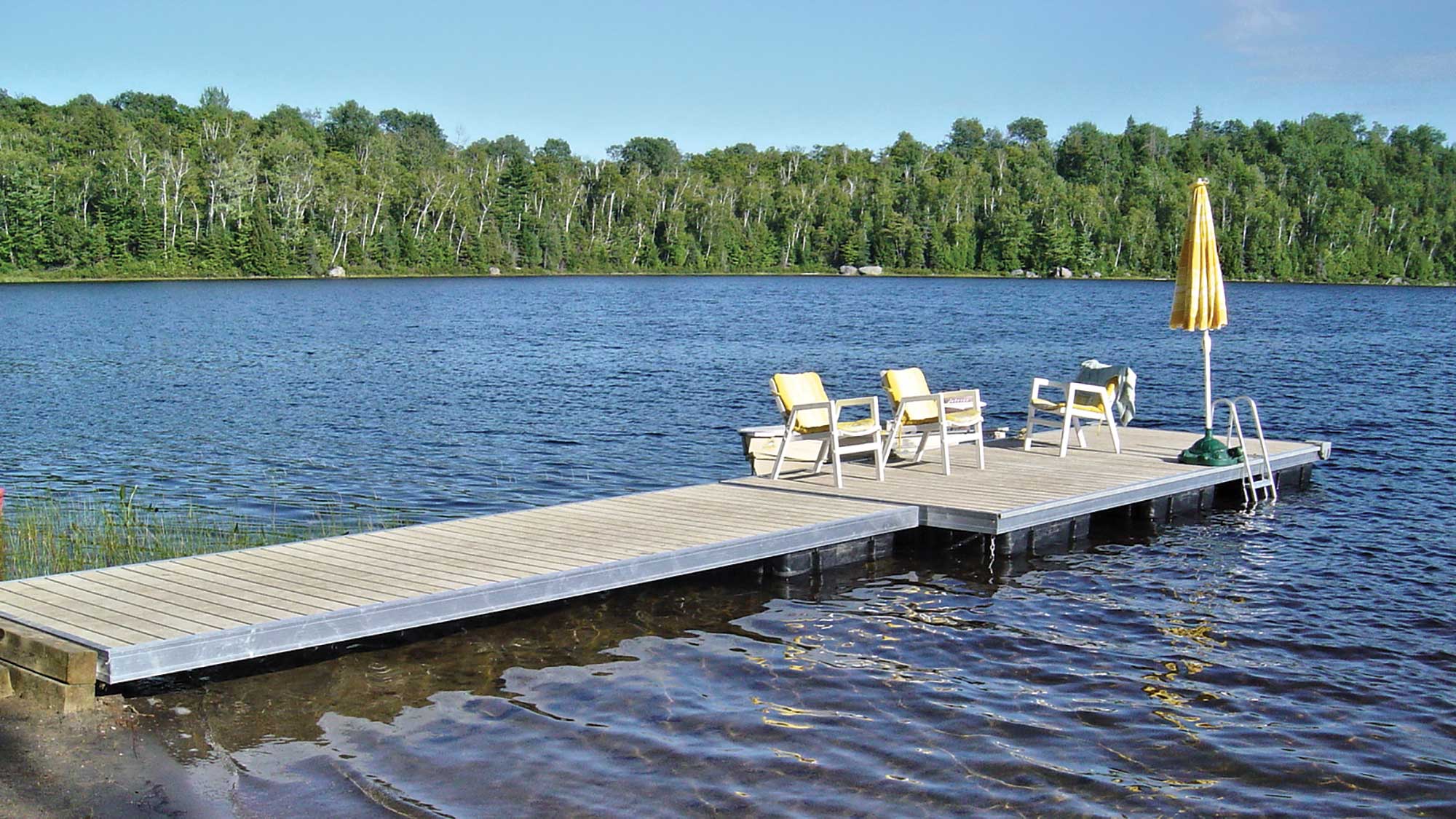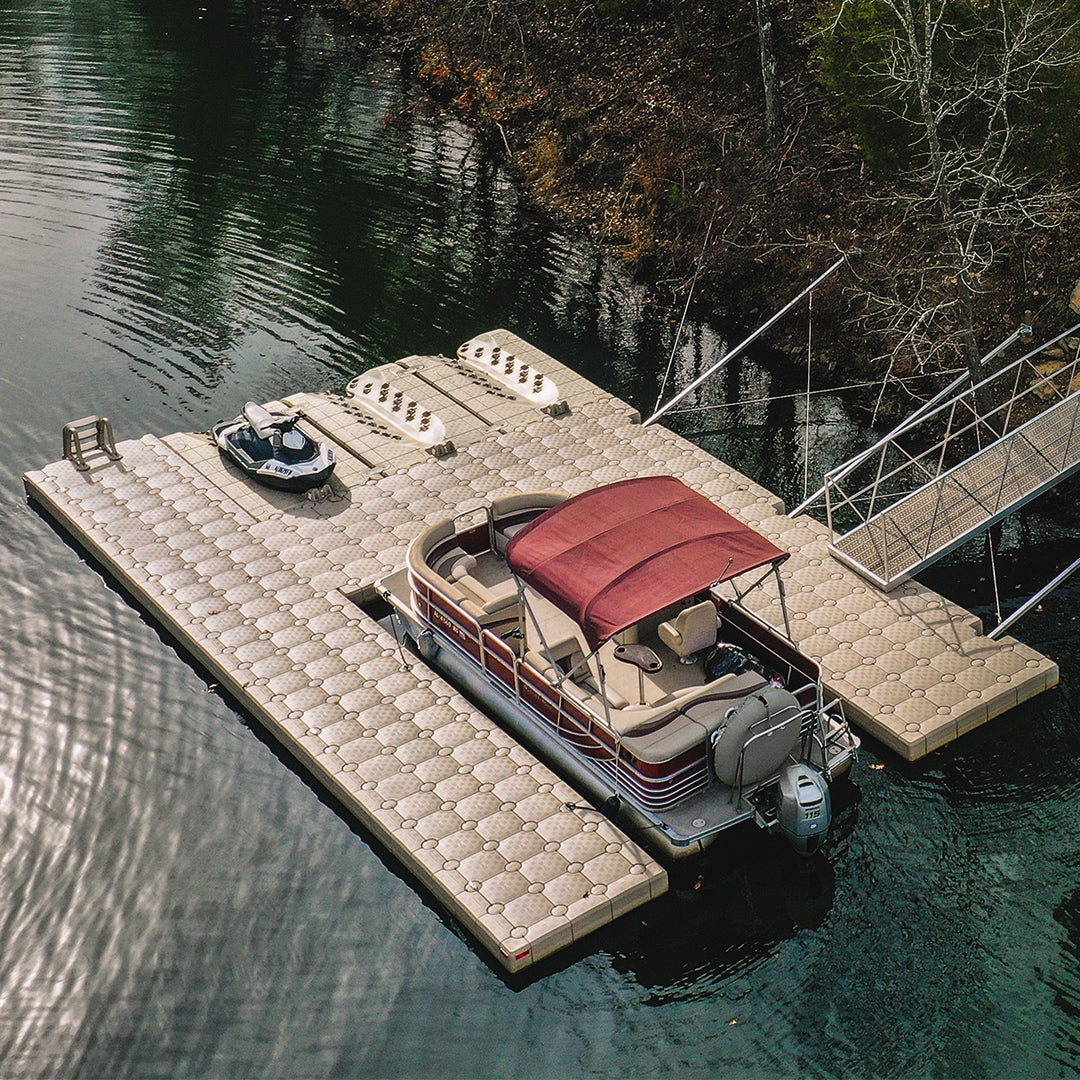Upgrade Your Waterside With Durable Floating Docks
Updating your waterfront with durable floating docks can substantially improve both functionality and aesthetics, giving a flexible service for numerous water activities. These structures are made to adjust to fluctuating water degrees, guaranteeing safety and availability throughout the seasons. With a series of materials readily available, consisting of low-maintenance options and typical wood, picking the right dock can enhance your personal design and meet useful needs. Understanding the subtleties of installment and maintenance is critical for guaranteeing durability and efficiency. What elements should you take into consideration when making this investment?
Advantages of Floating Docks
Floating docks offer a wide range of advantages that enhance their appeal for numerous maritime applications. One of the primary advantages is their flexibility to altering water degrees - floating dock builder. Unlike traditional set docks, floating docks increase and autumn with the tide, ensuring consistent accessibility for watercrafts and boat no matter ecological conditions. This feature significantly lowers the danger of damage to vessels, as they remain firmly anchored even during variations in water deepness.
In addition, floating docks are much easier to install and transfer, giving versatility for seasonal or short-term usage. Their modular layout enables modification to fit particular demands, whether for personal marinas, residential watersides, or commercial applications.
Additionally, floating docks create very little disruption to the aquatic environment, maintaining local environments and lowering the likelihood of erosion. They additionally provide enhanced security and stability for users, as their resilient nature supplies a much more forgiving surface than rigid structures.
Additionally, floating docks can promote a varied variety of activities, such as fishing, swimming, and leisure boating, making them a valuable asset for waterside advancement. Their adaptability and usefulness make floating docks a preferred choice for a selection of naval tasks.
Choosing the Right Materials
Selecting appropriate materials for floating docks is vital to their longevity, performance, and general efficiency. When selecting materials, think about factors such as environmental exposure, upkeep needs, and architectural integrity. Common products consist of wood, plastic, aluminum, and composite alternatives, each offering distinctive benefits and disadvantages.
Wood, while aesthetically pleasing, requires normal maintenance to stop rot and degeneration. Pressure-treated timber can improve durability, yet it may still give in to water damage in time. Plastic drifts, usually made from high-density polyethylene, are resistant to rust and call for very little maintenance, making them an appealing selection for low-maintenance applications.
Light weight aluminum is another practical alternative, understood for its strength and light-weight residential or commercial properties. It is immune to rust and can withstand rough climate condition, although it might be much more pricey than various other products. Composite products combine the very best characteristics of timber and plastic, using a low-maintenance and durable option that imitates the look of wood without the linked disadvantages.
Ultimately, the option of material must align with the planned use, ecological considerations, and spending plan restrictions, guaranteeing a useful and resilient floating dock that meets your particular needs.
Setup Refine Summary
The effective installation of a floating dock relies upon careful preparation and implementation, guaranteeing that it runs efficiently in its designated setting. The initial step entails evaluating website problems, consisting of water depth, shoreline functions, and prevailing weather condition patterns, which will educate the dock layout and anchoring system.
Adhering to the site assessment, the following phase is to prepare the floating dock elements. why not look here This includes setting up the frame, securing drifts, and affixing any essential hardware. It is critical to make certain that all links are water-resistant and robust to endure aquatic problems.
As soon as the dock is put together, the installment procedure commences with positioning the dock in the water. This can include a crane or various other training devices, specifically for bigger frameworks. Appropriate positioning is essential for functionality and security.

Upkeep Tips for Durability
Normal upkeep is essential for guaranteeing the durability and optimal efficiency of a floating dock. To accomplish this, begin with routine inspections at the very least two times a year, focusing on the honesty of the dock's framework, including the flotation protection devices and linking equipment. Try to find indications of corrosion, wear, or damage, and deal with any concerns quickly to protect against further damage.
Cleaning is an additional vital facet of upkeep. Remove particles, algae, and barnacles from the dock's surface to stop slippery conditions and preserve visual allure. Make use of a mild detergent and a soft brush to stay clear of damaging the dock's products.
Furthermore, ensure that the dock is effectively anchored and secured to endure seasonal changes in water levels and climate condition. Inspect the anchoring system for stability and make changes as required.
Enhancing Your Exterior Aesthetic
To produce a visually appealing outdoor room, integrating a floating dock can substantially enhance the overall aesthetic of your waterside property. Floating docks are not just functional however can likewise act as a striking focal factor that complements the natural environments - dock company. Offered in numerous materials and layouts, these docks can be personalized to match your home's architectural design and landscape
The enhancement of ornamental elements, such as integrated illumination or fashionable railings, even more elevates the dock's visual appeal. Consider utilizing natural timber finishes, which blend seamlessly with the environment, or selecting modern products like aluminum or composite decking that provide a streamlined, contemporary look.
Purposefully placing planters or seating locations on or around the dock can produce inviting areas that urge relaxation and satisfaction of waterside views. Additionally, incorporating shades and appearances that integrate with your landscape will develop a cohesive aesthetic throughout your exterior area.

Conclusion

Updating your beachfront with durable floating docks can dramatically improve both performance and appearances, supplying a functional remedy for different water tasks. Unlike standard fixed docks, floating docks increase and loss with the tide, guaranteeing regular access for boats and watercraft no matter of ecological problems.Choosing suitable products for floating docks is important to their long life, performance, and general efficiency.As soon as the dock is constructed, the setup process begins with positioning the dock in the water.In summary, floating docks offer various benefits, consisting of versatility to water degree modifications and a selection of product choices.
Comments on “Explore the Range of Floating Dock Solutions Designed to Suit Every Sailor's Requirements”